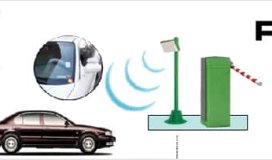In a library, there is enough knowledge compiled on papers for the entire world to take benefit from it. But, unfortunately, not everyone realizes the power of books and the knowledge they have. Modern libraries have thousands of books resting on numerous shelves. Libraries are often home to intellectual capital in the form of scholarly journals, books, reports and thesis'. These contain information which can change a lot of things for a lot of people. It is very necessary to employ a method that enables proper managements of all books and documents. However, this process of organizing library contents in a proper manner is a very tedious and labor oriented process to execute manually. This is why the integration of RFID technology has been gaining popularity amongst different libraries around the world.
RFID is a technology which has been taking over the world with its easy application and a wide range of benefits. The technology is compact to install to items which is why it is used in processes like product import export, cattle management etc. It allows easy management and identification of things. It is also used to aid the internet of things where everything can be remotely accessed from a distance. These are but some functions of the amazing technology which has been shaping the way for more advancement in many industries.
RFID tags can be easily integrated with books to help them manage easily without much hassle. It opens up the gates for things which were not possible for libraries before, like theft detection, a better check on the organizational department and easy check in and checkout service for the readers. In fact, because of RFID, self check in and checkout is also possible where the tags on the books are read automatically through the highly advanced receiver. RFID tags successfully replace both barcode scanners which involve a lot of human operation, and also EM security strips which are have proven not to be so reliable. The added ability to handle material without exceptions of digital content is something librarians have always wished for.
The use of RFID reduces the time it takes to carry out basic library operations like management, patron check in and checkouts, and basic day-today circulation operations. One more feature a library can add courtesy of RFID tagging system is the remote book drop feature. Book drops are machines where a patron can drop a borrowed book when the time of the issue is expired. These book drops don’t necessarily have to be inside the library. These can be at airports, shopping malls and other places of public convenience.
RFID tags have changed the library management scenario like it has done for many other industries. It is highly suggested to install the technology if you’re a library owner or manager.



